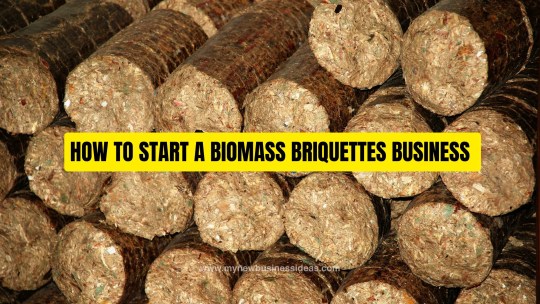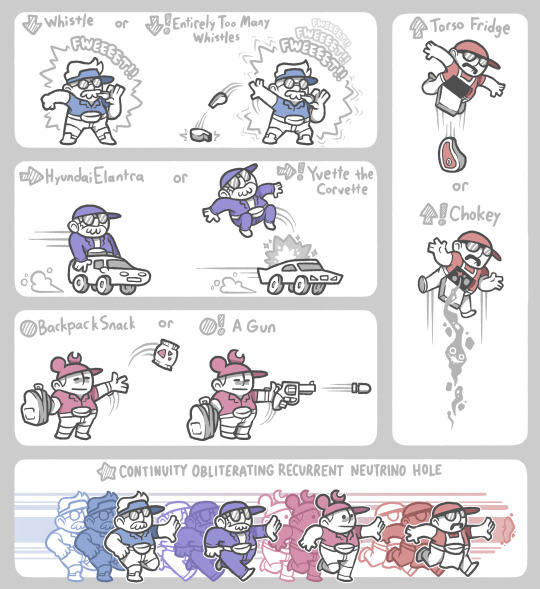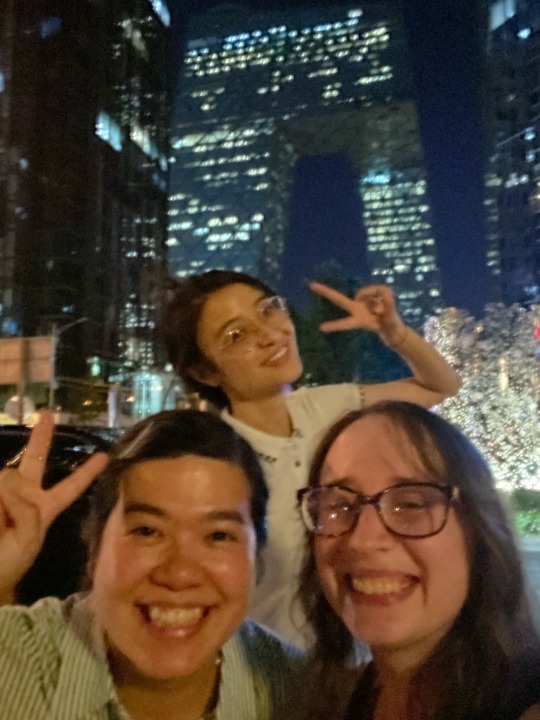#Briquette Process
Explore tagged Tumblr posts
Text
Rotary Dryer | Rotary Drum Dryer | Rotary Dryer Manufacturer
In the briquette process, a rotary dryer drum is commonly used for drying the biomass materials before they are compressed into briquettes. The drum dryer helps reduce the moisture content of the biomass, making it suitable for briquBrietting.
Are you looking for a reliable rotary drum dryer manufacturer in India? Get the best quote for high-quality products from our verified sellers.

#Rotary Dryer#Rotary Drum Dryer#Rotary Dryer Manufacturer#Lehra Fuel#Briquette Process#Briquette Flash Dryer
0 notes
Text
they f*cking killed him.
#lee sun kyun#lee sun gyun#i'm still shaking rn i don't think i've processed what those headlines mean. i haven't even fully read the articles bc i scrolled#down to where they found him and had such a visceral reaction to the briquettes (bc. Jonghyun.) i can't touch that. no#God. this is what they've done. they thought they could ruin his f*cking career and get away with no consequences his blood#is on their f*cking hands. everything they accused him of has no solid evidence he had a wife and two kids for f*ck's sake#A Million Roses playing as i got the news................... this world hates me that's a different kind of evil f*ck this#edit: and Epik High's Amor Fati in the queue. i'm not doing well
44 notes
·
View notes
Text
How to Start Biomass Briquettes Business
Biomass briquettes are solid biofuels made from compressed organic matter like agricultural, forestry, or industrial waste. In recent years, the demand for alternative energy sources has surged globally, with a growing emphasis on sustainable and eco-friendly solutions. So, biomass briquettes, have emerged as a promising substitute for traditional fuels like coal and wood. Biomass briquettes are…

View On WordPress
#biomass briquette machine#biomass briquette plant#biomass briquettes#biomass briquettes business#biomass briquettes business in india#biomass briquettes business plan#biomass briquettes manufacturing business#biomass briquettes production process#how to start biomass briquettes business#new business idea#sawdust briquette machine#small business ideas#start biomass briquettes business
0 notes
Text
Explore the eco-friendly world of Jay Khodiyar Biomass Briquetting Plant in India. Our advanced technology transforms agricultural and forestry waste into high-quality briquettes, promoting sustainability and profitability. Dive into the benefits and setup processes of our innovative briquetting solutions and join the green revolution today!
#Biomass Briquetting Plant#Eco-Friendly Fuel Alternatives#Agricultural Waste Recycling#Biomass Briquetting Technology#Sustainable Biofuel Production#Biomass Energy Equipment#Biomass to Briquettes Process#Waste to Energy Systems#Briquetting Plant Manufacturer#Biomass Pellet Machine#Biomass Briquetting Benefits#Cost-Effective Heating Solutions#Green Energy Briquettes#Biomass Briquetting Press
0 notes
Text
it hurts less now so i feel safe telling you it's because i directly picked up a burning hot charcoal briquette with my hands. not my bare hands! i was wearing disposable gloves which promptly melted. now you may be wondering why i would do this. it's because im really, extremely smart
smartly burned my hand ama
#basically: i was doing grilling because im a dad at heart and i fucked up the charcoal the first time by not leaving it in the chimney long#enough so it didn't get hot. so i had like two ashy briquettes and everything else was mildly lukewarm#so i was transferring it back into the chimney for round 2 and because all the briquettes were barely warm i was just using my hands#and i got to one of the ashy ones which was actually hot and in my mind i was like Careful! That one's hot!#but the brain message didn't reach my hand fast enough and my hand was already moving#so i just grabbed this burning hot charcoal directly with my fingers and then dropped it and had a moment to process 'Hey that hurt?'#anyway. pleased to announce the grilling was a success and i had a wonderful time and only injured myself like five more times#i usually have not injured myself while grilling. i just had a particularly unlucky evening#i also injured my achilles but that was unrelated to the grilling i just tripped#everyone don't be mean to me about it i've had a tough day and i need to sit down.#rookposting
61 notes
·
View notes
Text

What's this?? It's the Dad Squad from The Adventure Zone: Dadlands, all together in a single platform fighter moveset! Enter Briquette Hoggins, Chip Hugginsbee, Guy Ferrari, and Coach Red Ruffinsore!
I wanted to include a law/chaos meter mechanic in this, so here's how this one works. You play as one dad at a time, and each of the four special moves will swap you to the corresponding dad. Landing hits as a chaos dad (Briquette or Chip) will raise your chaos but drop your law. Landing hits as a law dad (Guy or Red) will raise your law but drop your chaos. Most standard attacks are themed after one type of dad (grill, vacation, car, or sports), and landing hits themed to your current dad will give extra meter. You can spend meter by holding down the special buttons for powered up versions of those attacks. Spend chaos for stronger neutral or up specials, and spend law for stronger side or down specials.
Now for the moveset itself. The down special swaps you to Coach Red Ruffinsore, who let's out a piercing toot on his whistle for high damage but practically no range. Spend law meter to chain together several whistles with no cooldown.
The side special swaps you to Guy Ferrari, who will drive forward a good distance in his Hyundai Elantra. Spend law meter to instead drive Yvette the Corvette, which explodes for massive damage at the end of the move.
The neutral specials swaps you to Chip Hugginsbee, who will toss a snack from his backpack in a lofty arc. Spend chaos meter to instead whip out just a gun, for a faster and more powerful projectile that shoots straight forward.
The up special swaps you to Briquette Hoggins, who fires a cut of meat from his chest cavity straight down, giving him a small bit of air in the process. Spend chaos meter to instead summon Chokey the barbecue spirit, which propels Briquette faster, further, and in any direction.
The Dad Squad's finale has them reach into a Continuity Obliterating Recurrent Neutrino (or, C.O.R.N.) Hole, extruding them through time and space. Briefly, all four dads, and fractal copies of them, will spread horizontally across the stage, moving and attacking in unison.
To those who made it this far, thanks! This was my 29th moveset concept in this series, and I'm planning on taking a break from this once I post the 30th one. Lemme know if you have any guesses as to who it might be, and I'll see y'all then!
#moose doodles#the adventure zone#taz#the zone cast#dadlands#taz dadlands#briquette hoggins#chip hugginsbee#guy ferrari#coach red ruffinsore#hypothetical taz fighter
221 notes
·
View notes
Note
Your Sun sculpt and Moon wip are fucking CRAZZY GOOD!! Pardon if you've already answered this before, but what's the material you use to sculpt them from?
Also, would you consider ever posting a video of a time lapse of you working on Moon so we could see how you do it? I know id be absolutely enamoured also also taking notes ajdjeknf
Hi! Thanks for your comment) 🥰I work with baked polymer clay Fimo "Professional" (They are sold in large briquettes) Unfortunately, now I will not be able to make a video with the modeling process because there are no necessary tools and I am already in the middle of the process) But! I may make a video in the future)) I can give you a couple of links to YouTube videos that inspired me once)
27 notes
·
View notes
Text

Salamander, of the elemental variety
In terms of elemental forms it is a mistake to approach from a position of evolutionary taxonomy. As in all transitions from perpendicular realities, such creatures are born from and induce the mythological symbols that define their anatomy.
The concept manifests the symbol, the symbol communicates the concept, an oroboros of cause and effect that is no less existentially annoying for creating animals made of the idea of fire, which is so certain of itself it doesn't know that it shouldn't be able to burn your house down.
In practical terms, a salamander should be addressed in the same manner as a grease fire, by entrapping it in a fireproof metal vessel and blocking the oxygen flow. Without a source of oxygen, the creature will poof back to its native reality. Any major brand of charcoal briquette is adequate bait. Oily rags, old newspapers, and pre-1975 furniture will do in a pinch.
-Melinoë's Guide to Incursive Pests & Misidentified Phenomenon, 2005 edition.
Prompt and process under the fold.
Prompt: colorful smoke swirling off of a black background, in the style of fluid glass sculptures, light teal and orange, tangled forms, light red and blue, rendered in cinema4d, sculpture-based photography, distorted and elongated forms:: fullbody, a colorful smoke swirl with colorful lights on a dark background, in the style of fluid, glass-like sculptures, light cyan and orange, serge marshennikov, colorful layered forms, conrad shawcross, focus stacking, bold lines, bright colors:: a real Charmander, dinosaur with burning tail, salamander, dino-iguana, glowing flames, rocky terrain, sumatraism, lava tail, burning tail, background sharp earth, raptor, elegant pose, hawaii, outback, iguana, morning glow, stock photo, regal pose --ar 4:3 --s 50 --v 6.0
This prompt was made two autogenerated prompts I made from this image I made by blending smoke and glass textures with Midjourney's weird image prompting system:

The image also had image prompts, in this case, three different charmanders, two being experiments for a Harryhausen Pokemon "what if" pictorial set and one being a "real animal version" attempt:



And those are from multiple versions of MJ.
Eventually, resulting in this gen:

Which I composited with multiple other variants, rebuilt the claw and some other details, and then did color correction and processing.
#midjourney v6#generative art#unreality#microfiction#salamander#elemental#fantasy#mythology#charmander#midjourney edit#ai assisted art
21 notes
·
View notes
Text
Amazing Tips on How to Get Rid of Cigarette Smell From Your Car!

How to get rid of cigarette smell in your vehicle can be challenging, but is essential for enjoying a fresh and healthy ride! Especially with Orlando's warm weather, those smoke odors can become pretty intense. Here are some fantastic strategies on how to get rid of cigarette smell and freshen up your car:
Tip 1. Give Your Car a Thorough Detailing

The first and most important step on how to get rid of cigarette smell is to give your car a serious detailing! Smoke particles can cling to upholstery, carpets, and even the hard surfaces, so a deep clean is a must. Start by vacuuming all fabric areas, including seats, carpets, and floor mats, to sweep away ash and debris. A steam cleaner or fabric-safe cleaning solution can work wonders to extract those stubborn smoke odors. Don’t forget the hard surfaces like the dashboard, console, and door panels; a good wipe down with the right cleaner will tackle the sticky residue that smoke leaves behind. And remember the headliner—it can soak up plenty of smoke, so give it some love too!
Deep Clean Upholstery and Carpets: Since smoke particles love to embed themselves in fabric, take charge with a steam cleaner or professional cleaning solutions to lift and remove those stubborn odors from seats, carpets, and mats!
Wipe Down All Surfaces: Nicotine and tar can leave behind a sticky mess! Use appropriate cleaners to refresh dashboards, consoles, door panels, and windows, making them shine and smell better.
Tackle the Headliner: That ceiling fabric can really hold onto smoke; gentle cleaning is the key to refreshing it without damaging anything.
Tip 2. How to Get Rid of Cigarette Smell With… Baking Soda!

Say hello to baking soda—a natural champion for deodorizing! Baking soda is how to get rid of cigarette smells without any overpowering fragrances. Just give it some time to do its magic! Sprinkle a generous amount over your fabric surfaces, from seats to carpets, and let it sit overnight to absorb those odor molecules. The next day, vacuum it up thoroughly, and wave goodbye to odors and the baking soda! For ongoing freshness, leave an open container of baking soda in the car to keep absorbing any unwelcome smells.
Apply to Fabric Surfaces: Go ahead and sprinkle baking soda generously over your seats and carpets. Let it work its magic for several hours or overnight to soak up odors.
Vacuum Thoroughly: After letting the baking soda do its thing, vacuum it up to take the absorbed odors along with it!
If any stubborn smells linger, feel free to repeat this process or set out open containers of baking soda overnight. How to get rid of cigarette smells with baking soda will help freshen up that ride and reclaim your driving experience!
Tip 3. Unlock the Power of Extra Odor-Eliminating Tactics!
youtube
While detailing and baking soda treatments work wonders, adding a few more tricks can supercharge how to get rid of cigarette smell.
Utilize White Vinegar: Put a bowl of white vinegar in your car overnight to conquer odors. Or mix equal parts white vinegar and water to wipe down surfaces, cutting right through that smoke residue.
Replace the Cabin Air Filter: Smoke particles can build up in the cabin air filter, bringing back those lingering odors every time you use the air system. Changing this filter keeps your air fresh and clean!
Employ Activated Charcoal: Activate your car’s freshness with charcoal! Known for its odor-absorbing magic, placing charcoal briquettes or specialized bags in your vehicle will help absorb leftover smells over time.
Ensure Proper Ventilation: Let your car breathe! Regularly opening windows and doors allows fresh air to flow in and chase away any residual odors.
Consider Professional Ozone Treatment: If stubborn smells are still hanging around despite your best efforts, don’t hesitate to seek out professional ozone treatments! Ozone generators work wonders by oxidizing and neutralizing those pesky odor-causing molecules. In Orlando, check out services like Steri-Clean, which specialize in smoke odor removal.
By enthusiastically applying these strategies, you’re well on your way on how to get rid of cigarette smell in your car and increase the value of every drive making it a fresh and enjoyable experience in Orlando!
Get ready to experience that fresh, like-new scent in your car again with the help of Toyota of Orlando!
Whether it's scheduling a thorough car detailing, picking up some detailing supplies, or seeking tips on how to get rid of cigarette smell from your vehicle, we’ve got you covered! Don’t wait—reach out to Toyota of Orlando today at (407) 298-0001!
#toyota of orlando#toyota#orlando#cigarette#cigarette smell#deodorize#car smell#car cigarette smell#clean car#new car smell#Youtube
2 notes
·
View notes
Text
Eco-Friendly Tips for Barbecue and Picnic's
1. Plan Ahead
- Reusable Items like cloth napkins, glass bottles - Compostable Serveware - Bulk Purchasing
2. Responsible Food Choices - Local and Organic - Plant-based Options
3. Waste Management Strategies - Recycling - Composting - Garbage
4. Cleaning Strategies Post-Event - Eco-friendly Cleaning Supplies: Biodegradable Cleaning Products, and DIY Cleaners. - Reuse and Uphold: Keep Leftovers and use Reusable Decor and Supplies. - Charity Donations: Food, Kitchen Items.
5. Encourage Guest Participation: Divide cleanup tasks among guests to make the process more efficient and emphasize the importance of sustainability.
6. Green Grilling Tips - Choose Efficient Equipment: If you’re using a gas grill, make sure it’s in good working order and use propane over charcoal, as it burns cleaner. - Natural Charcoal: If you prefer the flavor of charcoal grilling, opt for natural lump charcoal over briquettes, which often contain additives and produce more smoke. - Electric Grills: Consider using an electric grill if you have access to renewable energy sources like solar panels at home.
So this summer, remember: it’s not just about the fun and food, but also about taking steps to safeguard our environment! Embrace these green tips and make your gatherings a model of sustainability. Happy summer grilling and picnicking!
If you need a professional hand with eco-friendly house cleaning in San Francisco, book our services in GreenTerra!
#cleaning#cleaning tips#eco-friendly#eco-friendly cleaning#green cleaning#bathroom#bedroom#climate change#kitchen#green day#green summer
3 notes
·
View notes
Text











Beijing
The past week or so has been spent in Beijing with my best friend from college, Irene. Irene has been living in Beijing since 2019 and teaches English at a high school here. I’ve really enjoyed getting to see her neck of the woods and have been so grateful to have her as a guide because China, especially Beijing, is very overwhelming.
I’ve been to Beijing before, in 2018, but it was just for a day and a half and things have changed a lot since then. Beijing is definitely comparable at least in my experience to Mexico City. It is absolutely enormous and a beast to get around in, but there is so much to see and do and every neighborhood is so interesting and different. After being here a week I’ve barely scratched the surface, but I’ll go through by day.
Day 1, Sunday
We spent most of the day traveling from Macau to Beijing and getting ourselves situated. I was very nervous about flying into Mainland China as they are quite strict at border control and only very recently reopened the border to foreigners. Things only recently opened back up about 3 months ago. I made it through without a problem though and we made our way to the place I’m renting for the week. China does not allow foreigners to stay with residents without going through a long and arduous registration process, so I’m staying in an apartment about 25 minutes away from Irene, which is considered very close by Beijing standards.
Absolutely everything in China is done via apps and QR codes. Everything from riding the bus to ordering food in a restaurant to getting a taxi to paying your water bill; it is all done via apps that are mainly in Chinese. Thank goodness for Irene helping me get all the right apps set up showing me the ropes. After a week here I’ve finally figured out how to do most things by myself. It is certainly very convenient, you don’t need to talk to anyone or even carry around a wallet in most places.
In the evening we did a food tour with Lost Plate tours, it was really cool because they took us around to a lot of off the beaten track restaurants you’d never be able to find on your own and we tried some really amazing dishes.
All of the restaurants were in the Wudaoying Hutong, one of the historic neighborhoods in central Beijing. In total we visited 4 restaurants.
We tried 炸酱面 (zhajiangmian) hand pulled noodles with savory plum sauce and fresh vegetables (my personal favorite), 烤肉(kao rou) old school Mongolian style barbecue cooked with hot briquettes right on your table with a flat grill top. The style originated with soldiers building cook-fires literally inside their helmets, laying their shields on top, and cooking on that. We also had 门钉肉饼 (men ding rou bing) gigantic pork buns, fried on both sides and 春饼 (chun bing) spring pancakes with a variety of fillings. We rode on rickshaws around the hutong to get in between the different restaurants, it was so much fun. By the time we finished at a brewery after the fourth restaurant, we were absolutely stuffed, and made our way back for the night. Beijing is in a heat wave right now, with temperatures ranging from 95-104 degrees every day for the past 2.5 weeks, but in the evening in the hutongs it finally cooled down a bit and it was really lovely to walk around and see the neighborhood.
Day 2, Monday
Today was a lot more laid back. Irene had to work today, that meant that I stayed in my apartment in the air conditioning to rest and recover from the last crazy few days. I ventured out a bit in the afternoon to a nearby mall to find food. Malls in Asia are no joke, they are like small cities with every single kind of store you can think of. In the evening Irene and I walked back to that same mall and ate at a Mexican restaurant, then we walked a bit and explored the Chaoyang area I’m staying in. Even this one small area is enormous, we’ve been averaging about 20,000 steps a day even without doing all that much today. We saw the local river, the Liangma River, and visited another mall. It was very beautiful.
Day 3, Tuesday
Today was another rest day, I did not leave my room until 5pm today. It’s hard feeling like I’m missing out on things when I take rest days; but I’m in China for about 3 more weeks, and know that if I don’t take these rest days I will burn out from exhaustion very quickly. Especially with our trend of walking 8+ miles every day in 90+ degree weather.
In the evening we met up with a former student of Irene��s, Vicki, for Beijing style hot-pot. If you’re not familiar with hot pot it is exactly as it sounds, you’re given a hot pot of broth or hot water and tons of ingredients that you can add in as you choose to cook in the pot and take out as they become ready to eat. Beijing style is a little different because instead of being heated from underneath on a hot plate or stove; a very tall burning hot cylinder is with hot briquettes is placed directly inside the pot, with a little chimney at the top for the smoke to escape. It’s hard to describe, so see the video above to see what it’s like. We ate so much food and were absolutely stuffed.
Later we walked to the Central Business District (known as CBD in Beijing 😆). There were tons of skyscrapers and interesting buildings, its where all the major Chinese corporations have their headquarters. We took photos at a famous building known as the “Pants” building because it looks literally like a pair of pants.
Day 4, Wednesday
Today was my last partial rest day for a while. Irene got off work early today so in the afternoon I met up with her and we went to 798, which is the former industrial area turned trendy artists’ neighborhood. There were a lot of abandoned factories here that have been turned into artists’ residences, studios, and galleries and is near Beijing’s major art colleges. There was a lot of public art that was cool to see. We ate at a giant shaved ice place and ordered way too much food. Who knew ice was so filling 😂
Later I got to visit Irene’s apartment, and then she packed a bag to come stay the night at my place as we had an early start tomorrow. We ordered dim sum delivery and watched dramas which in my book is an excellent evening.
Day 5, Thursday
Today was spent visiting Irene’s school. Back when I was teaching university level English in Mexico City, Irene was able to visit me and spend the day at my school so it was really cool to do it the other way around today.
Irene’s school is absolutely enormous. It is a K-12 private boarding school on the outskirts of Beijing. It reminded me a lot of a US college campus. Most of the students except for the young students and students who come from other provinces live on campus during the week and go home on the weekends. Most of these students plan on attending college abroad at prestigious universities in places like the UK, the US, Canada, and Australia after graduating. They get English instruction from a very young age and are thus very fluent by the time they graduate.
Irene teaches grade 10-12 English, with between 8-20 students per class. I was amazed by how self-sufficient and responsible the majority of the students were (compared to my absolutely feral first graders back home). They were doing a study of the story The Most Dangerous Game and then created characters to role play in a DnD campaign based on the story; which I thought was really cool. Irene’s prep period was right before the lunch break, so we had a full 2.5 hours for lunch. We ate Xinjiang cuisine at a mall nearby the school, Xinjiang is in northwestern China bordering Kazakhstan, Uzbekistan, and Afghanistan so the cuisine was a unique mix of Middle Eastern and Chinese food; it was really really good. We didn’t realize we were eating there on the Eid holiday though and the restaurant was packed.
Later after teaching 3 classes Irene introduced me to a student of hers that wants to be an elementary school teacher after graduating. I hope I didn’t scare her off too much from the field. It was really cool but weird to talk with someone that age who is considering colleges and careers; I’m 29 and still feel like a kid most of the time, but thinking back to being 16/17 and thinking about how much I’ve learned and grown and experienced since then was very eye opening. Irene and I gave her a lot of advice about college etc. and we remembered being 21 and having all these anxieties about graduating and finding a job and all that and wow it is crazy how time flies and we are able to actually give advice about that stuff, it feels like just yesterday we were stressing about the exact same things she is stressing about.
In the evening we went to one of Irene’s favorite restaurants, The Taco Bar. Way back in 2013 Irene studied abroad in Beijing and was missing the easy access to Mexican cuisine we have in the US (specifically burritos) and went on a legendary search we now refer to as The Burrito Quest where she searched out and tried every single Mexican restaurant in Beijing, which is harder than it sounds. The Taco Bar didn’t have burritos, but it was hands down the winner of best Mexican restaurant in Beijing according to Irene. She has been coming here since 2013 even when their original location closed down, to their new location, and through the pandemic. We had an enormous amount of food and again ended the day extremely stuffed.
We had planned on this being our goodbye dinner, but we had discovered that Irene’s apartment had had a power cut. Rather than spend the night in darkness in 103 degree heat she decided to stay at my place again. But this meant embarking on an odyssey across Beijing to her apartment to get her stuff since she is traveling again this weekend; and then going back to my place for the air conditioning; this journey on Beijing public transport at rush hour during a heat wave was a major feat.
After 19,000 steps and a 2.5 hour trek we finally collapsed back at my place to sleep.
Day 6 Friday
Early in the morning I said goodbye to Irene as she headed off to work, she is traveling this weekend so she was going to the airport straight from work. I’ll really miss traveling with her, although I love solo travel, the best way to travel I think is with a close friend.
Today was my sightseeing day. I’ve been to Beijing before and have seen The Forbidden City, Tiananmen Square, and the Great Wall before; and given the heat had no desire to confront the crowds there again.
So on Irene’s recommendation today I visited the Summer Palace. It is an enormous complex where the emperor would visit in the summer months in northern Beijing. It is much smaller than the main palace at the Forbidden City in central Beijing, but even so it was enormous. The emperor had it constructed when the capital of China was moved to Beijing in the 1300’s and many elements of the palace were modeled after areas in other places in China that the emperor liked.
There was a shopping street modeled after a town in southern China that I’m visiting later on in this trip. It is famous for being built on the water and it was my favorite area in the palace. There was an enormous manmade lake that was built to be Beijing’s emergency water supply and modeled after a famous lake in Kunming and was used to train naval officers. It was truly enormous. The land excavated from building the lake was used to create a 200ft tall hill upon which the palace itself was constructed. There were also literally thousands of smaller structures built throughout the massive forest grounds. I sat next to an old man on a bench for about 40 minutes while I ate a snack and did some people watching. Everyone else was moving so much and there were so many people but me and that old man were just vibing.
Most of the palace was looted by the British in the late 1800s, but the buildings themselves and natural structures were in amazing condition and it was really cool to see, albeit the heat.
Then I headed over to Nanluoguxiang hutong, another historic neighborhood in central Beijing. This is considered to be rather touristy, most of the original buildings were destroyed in renovations of the city, but were reconstructed to look like traditional neighborhoods in Imperial China, called hutongs. It is a very beautiful area, with streams and lots of people walking about. I visited here in 2018 and it was my favorite area of Beijing to just walk around in. I had some lunch and explored for a while and did some shopping.
My final stop of the day was Baiyunguan, the White Cloud Temple in southern Beijing. It is one of the oldest Taoist temples in China and is nearby a famous Taoist College. By this point in the day I was pretty exhausted from the 103 degree heat and having spent about 6 hours on public transportation and walking in crowded tourist sites. It was incredible to walk into the temple from the loud crowded street and immediately felt how calm and quiet it was. It was literally completely silent except for the wind and the birds.
I walked around the temple for a while. Taoism is one of several traditional Chinese religions, which work in synch with each other. Many Chinese people practice elements of Taoism, Confucianism, Buddhism, and animism. Taoism is all about finding balance and peace in the natural world. The temples themselves are actually called 观 (guan) which translates to look at or observe. This comes from the Taoist belief that understanding comes from looking at or observing the natural world, so the temples are places to look and observe. There were lots of very beautiful areas, some statues of deities people offered incense to, and lots of displays of art and calligraphy. It was very peaceful and a nice way to end the day.
I made my way back and collapsed for the rest of the day.
That’s it for Beijing, I’m amazed if you made it all the way through this very long post. It was great to spend time here. I am writing this post on a plane ride to my next stop, Zhangjiajie in Hunan province in south central China. Stay tuned!
4 notes
·
View notes
Text
What are the application scopes of flat die granulators in agricultural production?
Flat die granulators have become essential tools in modern agriculture, serving multiple purposes across different sectors. Their applications mainly include:
1. Fertilizer Production
The flat die granulator efficiently process both organic and inorganic fertilizer materials into uniform granules. For organic fertilizers, pelleting improves storage convenience and allows better control of application amounts during spreading. Inorganic fertilizers benefit from reduced nutrient loss and increased efficiency when converted to compact pellets.
2.Feed Processing
Agricultural byproducts like crop stalks, hay, and other residues can be mixed with nutritional additives and compressed into animal feed pellets. These pellets offer balanced nutrition, easier digestion for livestock, and simplified storage. They are widely used in poultry, livestock, and aquatic farming to meet specific dietary needs at different growth stages.
3. Seed Coating
By encapsulating seeds with protective layers containing pesticides, fertilizers, or growth promoters, flat die granulators create coated seed pellets. This technology enhances seed resistance to pests and diseases while improving germination rates. Coated seeds adapt better to soil conditions, boosting crop yields and quality.

4. Biomass Energy Production
Agricultural waste materials like straw and wood chips are compressed into biomass pellets through the flat die granulator. These pellets serve as renewable fuel sources for heating or power generation, offering an eco-friendly solution to farm waste management.
5. Other Uses
Beyond agriculture, flat die granulators also process materials like sawdust, coal powder, and mineral ores into compact pellets for industrial applications such as fuel briquettes or material shaping.
In summary, flat die granulators play a vital role in modern farming-fertilizer production, optimizing feed quality, enhancing seed performance, and converting waste into energy. Their versatility continues to support sustainable and efficient agricultural practices worldwide.
0 notes
Text
Briquetting Solutions by Metal Engineering & Treatment Co. Pvt. Ltd
In today’s industrial landscape, efficient waste management and sustainable production practices have become critical. One innovative and eco-friendly solution gaining momentum is the Briquetting Plant—a powerful system designed to convert industrial, agricultural, and forestry waste into compact briquettes. At the forefront of this transformation is Metal Engineering & Treatment Co. Pvt. Ltd, a trusted name known for delivering high-quality engineering solutions tailored to modern industrial needs.
A Briquetting Plant is a specialized system that compresses loose biomass, metal chips, coal dust, and other waste materials into uniform, high-density briquettes. These briquettes are not only easier to transport and store but also serve as an efficient source of renewable energy. By implementing a briquetting solution, companies can drastically reduce waste disposal costs, lower carbon emissions, and create an additional revenue stream through briquette sales.
Metal Engineering & Treatment Co. Pvt. Ltd stands out in the industry for its commitment to innovation, quality, and environmental responsibility. With years of expertise in mechanical design and treatment technologies, the company offers state-of-the-art briquetting plant solutions tailored to meet diverse industrial requirements. Whether it's metal scrap, wood waste, or biomass residues, their systems are engineered for maximum efficiency, durability, and low maintenance.
What sets Metal Engineering & Treatment Co. Pvt. Ltd apart is their end-to-end approach—from initial consultation and custom design to installation and after-sales support. Their briquetting machines are equipped with cutting-edge technology that ensures uniform briquette quality, energy efficiency, and seamless operation even under rigorous industrial conditions.
Industries such as manufacturing, agriculture, and metallurgy have already witnessed significant benefits after incorporating Briquetting Plants into their processes. With rising energy costs and growing pressure to adopt sustainable practices, investing in a briquetting solution has never been more relevant.
If your business is looking to minimize waste, cut energy expenses, and contribute to a greener planet, it's time to consider a Briquetting Plant from Metal Engineering & Treatment Co. Pvt. Ltd. By turning waste into wealth, you’re not just investing in a machine—you’re investing in the future.
0 notes
Text
Biomass Pellet Manufacturer in Maharashtra – Vidhyut Energy
Introduction to Biomass Pellets
Biomass pellets are a sustainable and eco-friendly alternative to traditional fossil fuels. Made from compressed organic materials such as agricultural waste, wood chips, sawdust, and other biomass residues, these pellets are highly efficient for industrial and domestic heating applications. As Maharashtra continues to embrace renewable energy solutions, biomass pellets have gained significant popularity due to their cost-effectiveness and low carbon footprint.
Vidhyut Energy is a leading biomass pellet manufacturer in Maharashtra, offering high-quality, clean-burning fuel solutions for various industries. With a strong commitment to sustainability and innovation, we provide reliable biomass briquettes and pellets tailored to meet the energy needs of businesses across the region.

Why Choose Biomass Pellets?
1. Eco-Friendly & Renewable
Biomass pellets are made from organic waste materials, making them a carbon-neutral energy source. Unlike fossil fuels, they do not contribute to greenhouse gas emissions, helping industries reduce their environmental impact.
2. Cost-Effective Energy Solution
Compared to coal, diesel, and other conventional fuels, biomass pellets are more economical. They offer high calorific value, ensuring efficient combustion and lower operational costs for industries.
3. High Energy Efficiency
Biomass pellets have a dense structure and low moisture content, which ensures high heat output and consistent burning efficiency. This makes them ideal for boilers, furnaces, and power plants.
4. Supports Waste Management
By converting agricultural and forestry waste into usable fuel, biomass pellet production promotes sustainable waste management practices, reducing landfill dependency.
5. Government Incentives
The Indian government encourages the use of biomass energy through subsidies and policies like the National Biofuel Policy, making it a viable option for industries looking to transition to cleaner energy sources.
Vidhyut Energy – Leading Biomass Pellet Manufacturer in Maharashtra
At Vidhyut Energy, we specialize in manufacturing premium-quality biomass pellets and briquettes that meet international standards. Our state-of-the-art production facility in Maharashtra ensures consistent quality, high energy output, and reliable supply for industrial and commercial clients.
Our Biomass Pellet Products
Wood Pellets – Made from compressed sawdust and wood waste, ideal for heating and power generation.
Agricultural Waste Pellets – Produced from crop residues like sugarcane bagasse, rice husk, and cotton stalks.
Industrial Biomass Pellets – Customized for large-scale industrial boilers and thermal applications.
Why Choose Vidhyut Energy?
✔ Premium Quality – Our pellets undergo strict quality checks to ensure high density, low ash content, and optimal moisture levels. ✔ Sustainable Sourcing – We use responsibly sourced biomass materials to maintain ecological balance. ✔ Custom Solutions – We provide tailored biomass fuel solutions based on specific industry requirements. ✔ Timely Delivery – With a robust supply chain, we ensure on-time delivery across Maharashtra and beyond. ✔ Competitive Pricing – Our efficient manufacturing process allows us to offer cost-effective biomass pellets without compromising quality.
Applications of Biomass Pellets
Biomass pellets are widely used across various industries, including:
Power Plants – For co-firing with coal to reduce emissions.
Textile & Paper Mills – As a sustainable fuel for boilers.
Food Processing Units – For heating and drying applications.
Residential Heating – In pellet stoves for eco-friendly home heating.
Pharmaceutical & Chemical Industries – For steam generation and process heating.
Maharashtra’s Growing Demand for Biomass Pellets
Maharashtra, being an industrial hub, has a high demand for renewable energy solutions. With increasing fuel costs and environmental regulations, industries are shifting towards biomass pellets as a cleaner alternative. Vidhyut Energy plays a key role in meeting this demand by supplying high-grade biomass fuel to:
✔ Pune ✔ Mumbai ✔ Nagpur ✔ Nashik ✔ Aurangabad ✔ Kolhapur ✔ Other major industrial zones
Partner with Vidhyut Energy for Sustainable Biomass Solutions
As a trusted biomass pellet manufacturer in Maharashtra, Vidhyut Energy is committed to delivering superior-quality, renewable energy products that align with global sustainability goals. Whether you are an industrial player or a distributor, we provide the best biomass fuel solutions to enhance your energy efficiency.
Contact Us Today!
For inquiries about our biomass pellets and briquettes, visit our website: 👉 https://www.vidhyutenergy.com
Location: BG-002, Raj Darshan Society, Dada Patil wadi,Near Platform No. 1, Thane(W), Maharashtra - 400602 Email: [email protected] Phone: +91-9967 457 782
Join the green energy revolution with Vidhyut Energy – your trusted partner for biomass pellets in Maharashtra!
#biomass pallet manufacturers#biomass pallet manufacturers near me#biomass pallet manufacturers in thane
0 notes
Text

Trademark Class 4: Industrial Oil and Fuels
When it comes to building a strong brand identity, securing a trademark is crucial. It provides legal protection and distinguishes your products or services from competitors. In the complex world of trademarks, goods and services are categorized into 45 distinct classes. Today, we're diving into Trademark Class 4, focusing on industrial oils and fuels – the lifeblood of many industries.
What is Trademark Class 4?
Trademark Class 4 encompasses a wide range of industrial oils, greases, lubricants, fuels, and related products used in manufacturing, transportation, and various industrial processes. It's essentially the category for substances that keep machinery running smoothly and power industrial operations.
Understanding this class is vital for businesses involved in:
Manufacturing: Companies producing lubricants, greases, and industrial oils for machinery.
Energy Sector: Businesses dealing with fuels, including coal, wood, and other combustibles.
Transportation: Companies supplying oils and fuels for vehicles, ships, and aircraft.
Construction: Businesses providing oils and greases for heavy machinery and equipment.
A Detailed Look at the Goods in Class 4
To better grasp the scope of Trademark Class 4, let's explore some of the specific goods it covers:
Industrial Oils and Greases: Lubricants, cutting oils, hydraulic fluids, and other oils used in machinery and equipment.
Fuels: Coal, wood, gasoline, diesel, natural gas, and other combustible materials used for energy generation.
Candles and Wicks: Lighting materials used in industrial settings.
Dust Absorbing, Wetting, and Binding Compositions: Substances used in industrial processes to control dust and bind materials.
Solid Fuels: Briquettes, charcoal, and other solid fuels used for heating and industrial processes.
Why Trademark Registration is Essential in Class 4?
Trademark registration is particularly important for businesses operating within Trademark Class 4 due to the following reasons:
Protection against Infringement: Registering your trademark prevents others from using a similar mark that could confuse consumers or damage your brand reputation.
Brand Recognition: A registered trademark helps establish a strong brand identity in a competitive market.
Legal Rights: Trademark registration grants you exclusive rights to use your mark, allowing you to take legal action against infringers.
Business Expansion: A registered trademark can facilitate business expansion into new markets and territories.
The Process of Trademark Registration Class 4
The following steps are often included in the trademark registration procedure in India:
Trademark Search: Conduct a thorough search to ensure your chosen mark is unique and available for registration.
Application Filing: File a trademark application with the Indian Trademark Registry, specifying the goods and services covered under Trademark Class 4.
Examination: The registry examines your application to ensure it meets the legal requirements.
Publication: If the application is approved, it is published in the Trademark Journal to allow for objections from third parties.
Registration: If no objections are received, the trademark is registered, and a certificate is issued.
Simplifying Trademark Registration with Online Legal India
Navigating the complexities of trademark registration can be challenging, especially for businesses unfamiliar with the legal procedures. Services like Online Legal India can simplify the process, offering expert guidance and support throughout the registration journey.
Online Legal India can assist with:
Trademark Search: Conducting comprehensive trademark searches to ensure availability.
Application Filing: Preparing and filing accurate trademark applications.
Responding to Objections: Handling objections and representing your interests before the Trademark Registry.
Trademark Monitoring: Monitoring your trademark to prevent infringement.
By leveraging the expertise of Online Legal India, businesses can streamline the trademark registration process and ensure their valuable brand assets are protected.
Key Considerations for Class 4 Trademark Registration
Specificity of Goods: Clearly define the specific goods within Trademark Class 4 that your business deals with.
Uniqueness of Mark: Choose a unique and distinctive trademark that is not confusingly similar to existing marks.
Geographical Scope: Consider the geographical scope of your business operations and register your trademark in relevant territories.
The Importance of Professional Guidance
While online resources can provide general information, it's crucial to seek professional guidance from experienced trademark attorneys or service providers like Online Legal India. They can provide tailored advice and ensure your trademark registration process is handled efficiently and effectively.
Conclusion
Trademark Class 4 plays a vital role in protecting the brands of businesses involved in industrial oils and fuels. Trademark registration is essential for safeguarding your brand identity and ensuring your legal rights. By understanding the intricacies of Trademark Class 4 and seeking professional guidance, you can navigate the registration process successfully and establish a strong brand presence in the industrial sector. And when you need help, services like Online Legal India are there to make the process easier.
0 notes